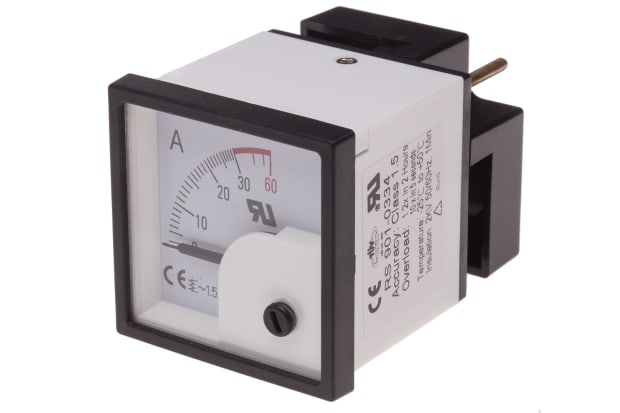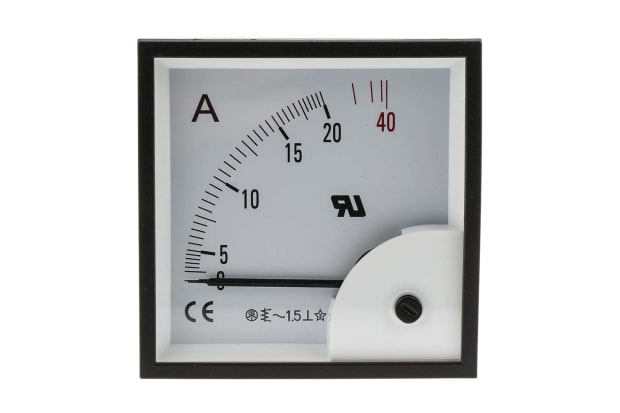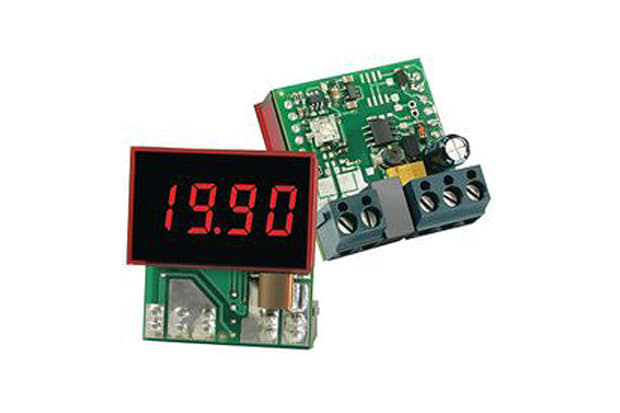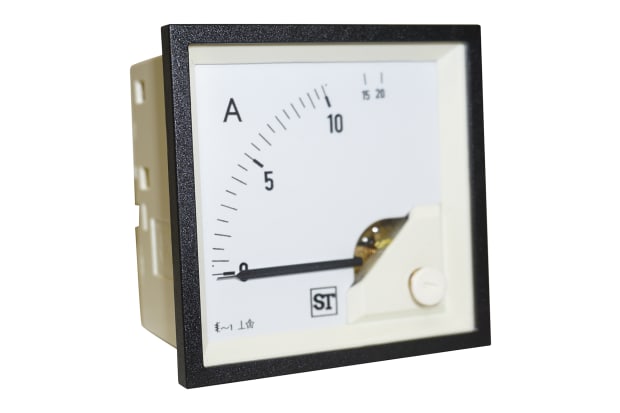- Published 20 Dec 2024
- Last Modified 20 Dec 2024
- 7 min
A Comprehensive Overview of Ammeters and Their Features

Discover the significance of ammeters in electrical measurements, including their various types and essential safety features that ensure reliable performance.
What Is an Ammeter?
An ammeter, short for "ampere meter," is a crucial instrument used to measure electric current in a circuit, with the unit of measurement being the ampere (A). The primary function of an ammeter is to quantify the flow of electric current, which is essential for diagnosing issues within electrical systems.
Ammeters measure current in two main ways:
- Current Draw: This refers to the amount of current flowing through a specific part of a circuit.
- Continuity: This assesses whether current is steady and checks for interruptions in the circuit.

In practical applications, ammeters are essential for identifying electrical problems. For instance, unusually high current levels may indicate a short circuit or malfunctioning components, while low levels can signify interruptions or increased resistance. It is common practice in Singapore to use ammeters when troubleshooting electrical outlets or during maintenance tasks like fuse replacements.
It’s important to distinguish ammeters from multimeters. While ammeters specifically measure current, multimeters are versatile tools that can measure voltage, resistance, and other parameters. This distinction helps users select the appropriate instrument for their needs.
Types of Ammeters
Like other electrical instruments and components, ammeters are available in a variety of designs. The following are some of the most commonly encountered types:
Analogue Ammeters
Analogue ammeters display readings on a dial with a moving pointer. They are further categorised into:
- Moving Iron Ammeters: These devices utilise an iron needle that moves in response to electromagnetic forces generated by a coil. They can measure both alternating (AC) and direct currents (DC) and are widely used in industrial settings across Singapore for AC measurements.
- Moving Coil Ammeters: These operate using a coil that reacts to magnetic fields produced by direct current. They are not suitable for AC measurements.
- Moving Magnet Ammeters: Similar to moving coil ammeters, these have the coil inside the meter case and use a permanent magnet to move the needle. They can handle higher currents compared to moving coil models.
Additional types of analogue ammeters include:
- Electrodynamic Ammeters: Utilise an electrodynamic magnet sensitive to both AC and DC currents.
- Hot Wire Ammeters: Employ a thermally sensitive wire that expands with heat, providing a reading based on temperature changes.
- Milliameters and Microammeters: Designed for measuring very low currents in milliamperes (mA) and microamperes (µA), respectively.
Digital Ammeters
Digital ammeters, also referred to as digital panel ammeters, display readings on digital screens, making them easier to read in low-light conditions. These devices are increasingly popular in industrial environments due to their programmability and features such as alarms for specific current thresholds.
When selecting a digital ammeter, consider:
- Minimum and maximum operating temperature
- Required amp measurement range
Clamp-On Ammeters
Clamp-on ammeters are versatile tools commonly used by electricians. They feature insulated jaws that clamp around conductors without needing to disconnect them. This allows for safe and efficient measurements of current flow.
Modern clamp meters may include multiple sensor coils within the jaws, enabling them to measure several conductors simultaneously without separation. While effective for high currents, they may be less accurate for low currents in the milliampere range.
Safety Mechanisms in Ammeters
Safety is paramount when using electrical measuring devices, including ammeters. These instruments are equipped with essential safety features such as fuses and overload protection mechanisms that act as fail-safes, interrupting the circuit if the current exceeds safe levels. This is crucial in preventing hazards like electrical shocks, short circuits, and damage to both the ammeter and connected devices. In Singapore, where electrical safety compliance is strictly enforced, investing in ammeters with robust safety mechanisms not only ensures adherence to regulations but also minimises risks in various environments, from industrial facilities to educational institutions.
In high-precision settings such as semiconductor manufacturing and advanced research laboratories, features like double insulation and current limiters provide an added layer of protection. These safety features are particularly important in industries where reliability and accuracy are critical for maintaining productivity and preventing costly downtime. Many ammeters available in Singapore come with certifications such as CE marking or IEC compliance, which verify that they meet international safety standards.
Calibration of Ammeters
To maintain accuracy, regular calibration of ammeters is essential. Calibration should be performed according to manufacturer recommendations or industry standards, typically on an annual basis. However, if an ammeter is used frequently or in critical applications where precision is vital, more frequent calibration (e.g., every 3-6 months) may be necessary. This ensures reliable measurements and compliance with quality assurance standards. RS offers a comprehensive calibration service that adheres to RSCAL standards, ensuring that your instruments are fine-tuned to minimize the risk of inaccurate measurements.
How to Use an Ammeter
To ensure accurate and safe usage of an ammeter, follow these steps:
- Select the Appropriate Model: Determine whether you need an analogue or digital ammeter based on your specific requirements.
- Safety Precautions: Before using the ammeter, inspect all equipment for faults. Wear insulated gloves and ensure you are working in a dry environment to minimise electrical shock risks.
- Connect Leads Properly: Attach the red lead to the positive terminal and the black lead to the negative terminal of the circuit you wish to measure. Ensure connections are secure to prevent arcing or loose contacts.
- Take Readings: For analogue meters, observe where the needle points; for digital meters, simply read the displayed value.
- Post-Measurement Precautions: After taking measurements, safely disconnect all leads before restoring power to the circuit.
FAQs
Popular Brands
Murata Power Solutions
Digital panel ammeters from Murata Power Solutions make a great choice and are well-suited to a range of applications.
Sifam Tinsley
Analogue panel ammeters from Sifam Tinsley offer high quality and high levels of precision. Shop the full range now.




